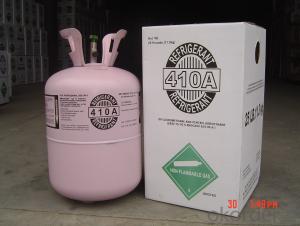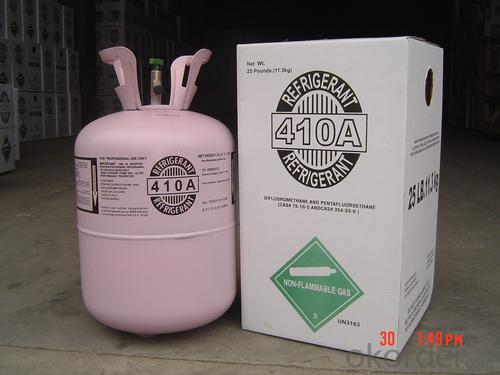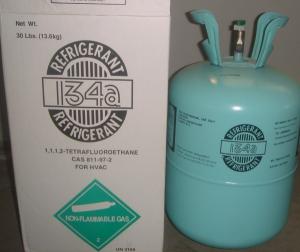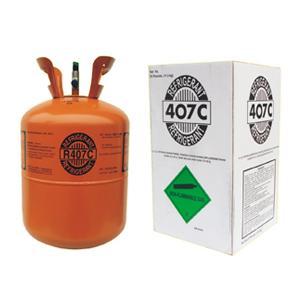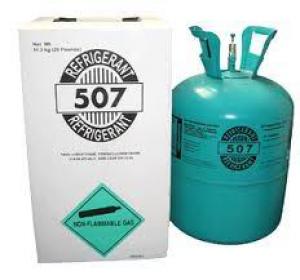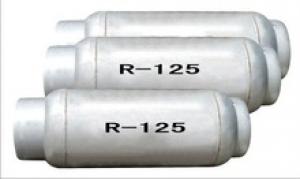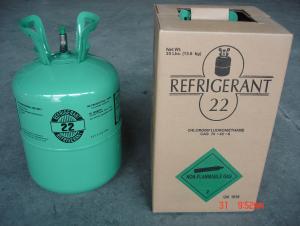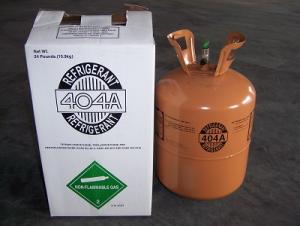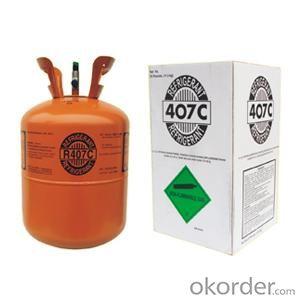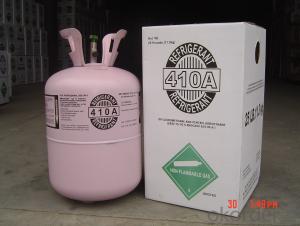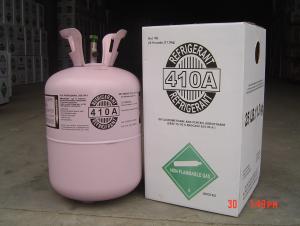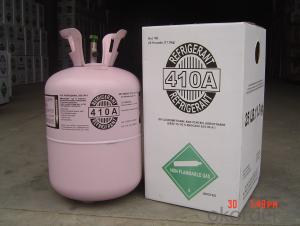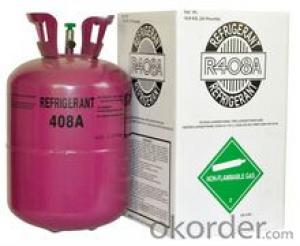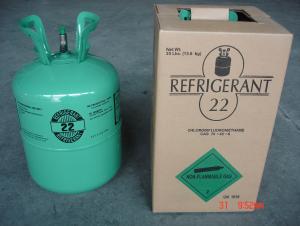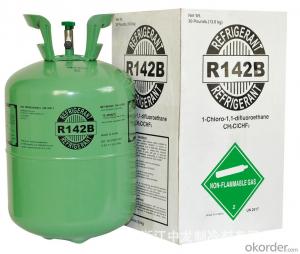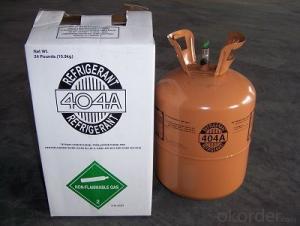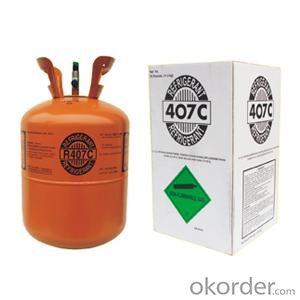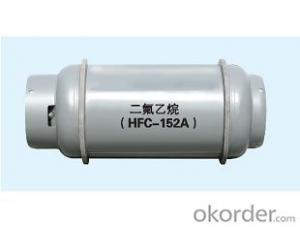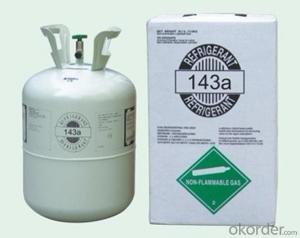Refrigerant R410a in 25LB
- Loading Port:
- Shanghai
- Payment Terms:
- TT OR LC
- Min Order Qty:
- -
- Supply Capability:
- 1000MT m.t./month
OKorder Service Pledge
OKorder Financial Service
You Might Also Like
Specifications
1. net weight: 800g
2. 1L strong cylinder
3. purity>99.9%
Physical Properties
Molecular Weight 72.58
Boiling Point at 1 atm (101.3 kPa) -52.7°C
Critical Temperature 72.5°C
Critical Pressure 4964.2 kPa
Critical Density 0.500 g/cm3
Liquid Density at 30°C 1038.2 kg/m3
Liquid Heat Capacity at 30°C 1.78 kJ/(kg•°C)
Vapor Heat Capacity at Constant Pressure
at 30°C and 1 atm (101.3 kPa) 0.85 kJ/(kg•°C)
Heat of Vaporization at Boiling Point 256.7 kJ/kg
ODP 0
GWP 0.29
Packaging and Storage
R-410A is available in disposable steel cylinders (11.3kg/30lb), returnable steel cylinders (800kg/926L). The filling ratio is not more than 0.87kg/L.
Cylinders should be stored in cool, dry and well-ventilated area away from sunlight and rain.
- Q: What is organic matter?
- Organic compounds (organic compounds) mainly by the oxygen elements, hydrogen, carbon elements. Organic matter is the material basis for life. Fat, amino acids, protein, sugar, heme, chlorophyll, enzymes, hormones and so on. Biological metabolism and biological genetic phenomena, are related to the transformation of organic compounds. In addition, many substances closely related to human life, such as oil, natural gas, cotton, dyes, chemical fiber, natural and synthetic drugs, are organic compounds.
- Q: Identification of Derivatives of Chemical Hydrocarbons in High School
- Phenol and ferric chloride reaction, aldehyde and copper hydroxide will produce brick red precipitation, and the formation of silver diamine hydroxide silver phase precipitation, and there are aldehydes in formic acid, an aldehyde corresponding to two silver Generation, and formaldehyde can be seen as there are two aldehyde groups, can be generated corresponding to the four silver quality.
- Q: Is not organic matter must not hydrogen ah?
- Organic matter that organic compounds. Carbon compounds (carbon monoxide, carbon dioxide, carbonates, metal carbides, cyanide excluded) or hydrocarbons and their derivatives in general. Organic matter is the material basis for life. 【Features】 Most organic compounds mainly contain carbon and hydrogen elements, in addition often contain oxygen, nitrogen, sulfur, halogen, phosphorus and so on. Part of the organic matter from the plant sector, but the vast majority of oil, natural gas, coal as raw materials, through artificial synthesis method. Compared with inorganic substances, the number of organic matter, up to several million kinds. The carbon atoms of the organic compound have a very strong ability to bind to each other to form a carbon or carbocyclic ring. The number of carbon atoms can be 1,2, it can be thousands, tens of thousands, many organic polymer compounds can even have hundreds of thousands of carbon atoms. In addition, the isotopic phenomenon of organic compounds is very common, which is the cause of many organic compounds
- Q: What are the inorganic compounds
- The inorganic compound is a compound other than an organic compound. Organic compounds are organic matter containing C (carbon), in addition to CO2, carbonated, carbonate-containing.
- Q: Cracked
- It is almost impossible for this problem to look at your reaction conditions. Generally speaking, the alkane reaction is mainly difficult to decompose directly into ions
- Q: What cells are composed of compounds
- The organic matter that constitutes the cell generally refers to the general term for carbon-containing compounds or hydrocarbons and their derivatives. In nature, the types of organic matter are extremely numerous. Among them, organic compounds - carbohydrates, proteins and nucleic acids, which are composed of carbon, hydrogen, oxygen, nitrogen, sulfur and phosphorus, are the most important organic compounds in cells.
- Q: What is organic matter? Candle is organic?
- Candle chemical formula: C2H2 so candle is organic
- Q: NH4HCO3 and so have C atoms ah, why still inorganic
- Not all carbon compounds are organic compounds, CO, CO2, carbonic acid, carbonates (including salt and acid salts), metal carbides, cyanides, thiocyanates are inorganic compounds.
- Q: What is organic?
- Human beings have a long history of organic compounds. As early as the 17th century, humans could only obtain some organic compounds such as protein, fat, carbohydrate and dyes from animals and plants as food, food and clothing. 1828 German chemist Wilhelm (F Wohler) for the first time with inorganic acid ammonium nitrate synthesis of organic urea. After 1844, people have synthesized a large number of organic compounds such as methane, acetylene, acetic acid, oil and sugar, and since then humans have made organic chemistry into the synthetic era. The development of synthetic organic matter is clearly recognized: there is no clear boundary between organic matter and inorganic matter, but there are some differences in composition, structure and nature. Now people already know that organic compounds in the composition of most contain carbon, hydrogen, oxygen, nitrogen and other elements, a few also contain sulfur, phosphorus, halogen and so on. Any organic compound, its molecular composition contains carbon, the vast majority also contains hydrogen. Since the hydrogen atoms of the organic compound molecules can be replaced by other atoms or radicals, so many other organic compounds are derived, it is generally believed that hydrocarbons and their derivatives are known as organic compounds, referred to as organic compounds; The chemistry of compounds is called organic chemistry.
- Q: Why can organic matter be unique in chemical substances? What is the nature of the C atom?
- To give a reason, the current production of more economical temperature control is limited.
Send your message to us
Refrigerant R410a in 25LB
- Loading Port:
- Shanghai
- Payment Terms:
- TT OR LC
- Min Order Qty:
- -
- Supply Capability:
- 1000MT m.t./month
OKorder Service Pledge
OKorder Financial Service
Similar products
Hot products
Hot Searches
